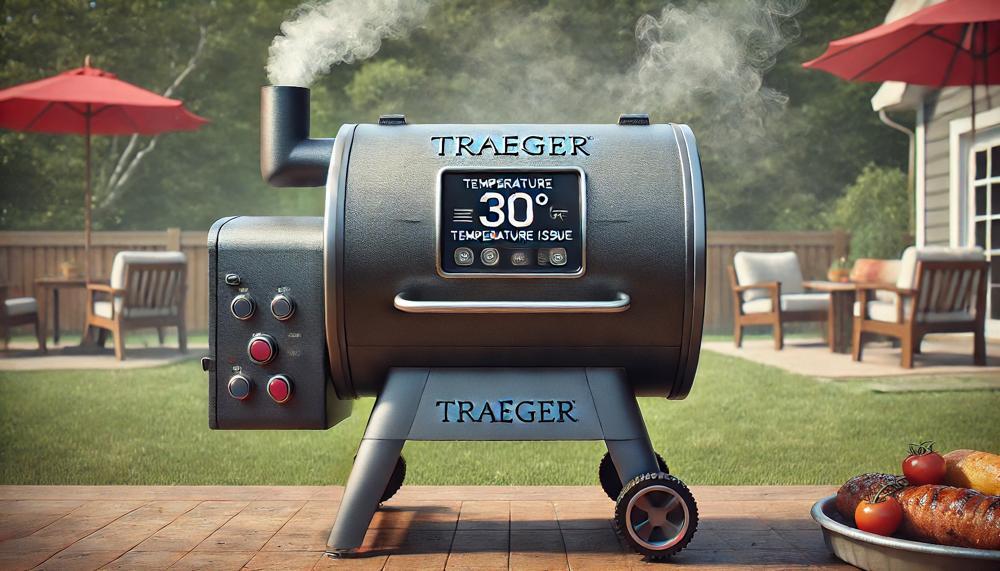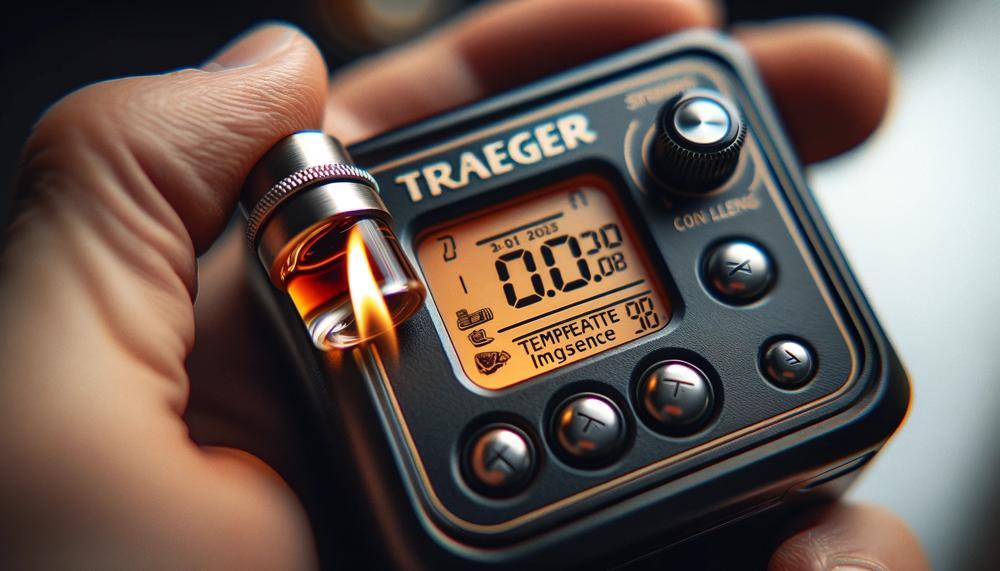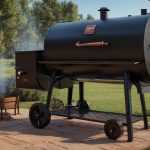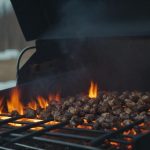Yes, your Traeger grill can go above the set temperature, and understanding why this happens can save you from the frustration of undercooked or overcooked food. Traeger grills, known for their convenience and the delicious smoky flavor they impart, can sometimes experience temperature swings due to various factors. These fluctuations can turn a delightful grilling session into a guessing game, but knowing the common causes can help you maintain better control.
Key factors contributing to these temperature issues include weather conditions, poor maintenance, and mechanical malfunctions. For instance, grilling on a windy day or in extremely cold weather can cause significant deviations from the set temperature. Similarly, neglecting routine maintenance can lead to clogged firepots or faulty temperature sensors, both of which can throw off your grill’s performance. Addressing these issues can help you keep your Traeger grill running smoothly and your food perfectly cooked.
Key Takeaways
- Weather Impact: Windy or cold weather can cause your Traeger grill to exceed the set temperature.
- Maintenance Matters: Regular cleaning and maintenance of your grill are essential to avoid temperature fluctuations.
- Mechanical Issues: Faulty components, like temperature sensors or augers, can lead to unexpected temperature changes.
- Lid Management: Keeping the lid closed as much as possible helps maintain a stable internal temperature.
- High-Quality Pellets: Using high-quality pellets ensures consistent burning and temperature control.
By understanding and addressing these factors, you can enjoy a more reliable grilling experience with your Traeger, ensuring your meals are cooked to perfection every time.
Contents
Is There a Temp Error Code Showing on the Control Board Screen?
The common temperature error codes on a Traeger control board screen include HEr, LEr, ERR, ER1, and EREach code signifies a different issue with the grill’s operation. Here’s a detailed breakdown of these error codes and their resolutions:
| Error Code | Description | Resolution |
| HEr | High-Temperature Error |
|
| LEr | Low-Temperature Error |
|
| ERR | General Error |
|
| ER1 | RTD Sensor Failure |
|
| ER2 | Ignition Failure |
|
Reasons Your Traeger Grill May Not Be Heating Up
| Issue | Description | Solution |
| Temperature Swings | Various factors like pellet issues, incorrect start-up, and maintenance neglect can cause erratic temperature changes. | Ensure proper start-up procedures, regular maintenance, and use high-quality pellets. |
| Wood Pellet Issues | Problems such as no pellets in the hopper, low-quality or moist pellets, and jammed augers. | Check the pellet hopper for adequate, dry, and high-quality pellets; clear any auger jams. |
| Incorrect Start-Up Procedures | Each Traeger model has specific start-up steps that, if not followed, can lead to temperature spikes or drops. | Refer to your grill’s manual for correct start-up procedures. |
| Weather Conditions | Cold or windy weather can significantly impact the grill’s internal temperature. | Consider using a grill cover or relocating the grill to a less exposed area during adverse weather conditions. |
| Dirty or Faulty RTD Probe | A malfunctioning or unclean RTD probe can lead to inaccurate temperature readings. | Clean the RTD probe regularly and replace it if it’s faulty. |
| Insufficient Power | Not enough power reaching the grill can prevent it from heating up properly. | Ensure the grill is plugged into a reliable power source with adequate voltage. |
| Blocked Auger | A blockage in the auger prevents pellets from being fed into the ignition chamber. | Regularly inspect and clear the auger of any blockages. |
Jammed Auger
A jammed auger can cause a Traeger grill to go above the set temperature by disrupting the normal flow of pellets into the firepot. When the auger jams, it can lead to an initial overfeeding of pellets before the jam fully stops the flow. This sudden influx of pellets can cause a larger than expected fire, increasing the temperature beyond the set point.
Here’s a detailed explanation of the process:
| Issue | Explanation | Preventive Measures |
| Jammed Auger | A jammed auger initially allows an excess amount of pellets to be fed into the firepot, resulting in a larger flame and higher temperature. | Regularly clean and maintain the grill, use high-quality dry pellets, and lubricate the auger motor. Inspect for wear or damage frequently. |
| Temperature Spike | The excess pellets create a bigger fire, causing the grill’s temperature to spike above the desired setting. | Ensure proper start-up and shut-down procedures, and routinely check for any obstructions in the auger. |
| Fire Goes Out | Once the auger completely jams, the flow of pellets stops, and the fire eventually goes out, leading to temperature drops and instability. | If a jam occurs, disconnect the grill, remove obstructions with a long tool, and contact Traeger customer support if necessary. |
Practical Steps to Prevent Auger Jams:
- Regular Cleaning: Keep the grill clean, focusing on the auger and firepot.
- Use Quality Pellets: Choose high-quality, dry pellets to avoid clumping and jamming.
- Lubricate Auger Motor: Regular lubrication ensures smooth operation and reduces the risk of jams.
- Inspect for Wear and Damage: Routine checks can help identify potential problems before they cause a jam.
By following these preventive measures and maintaining your Traeger grill properly, you can minimize the risk of auger jams and ensure stable temperature control.
Traeger Warranty Policy Notes
Traeger’s warranty policy addresses issues with grills exceeding the set temperature within a three-year warranty period. If your Traeger grill experiences temperature spikes beyond the set point, the company provides comprehensive support. Here’s what you need to know:
| Issue | Action Required | Warranty Coverage |
| Temperature exceeds set point | Contact Traeger’s customer service | Three-year warranty covers defects and malfunctions |
| Initial overfeeding of pellets due to jammed auger | Regular maintenance and use of quality pellets | Covered if it is a defect in materials or workmanship |
| Other consequential damages | Review warranty terms carefully | Consequential damages may not be covered |
Traeger’s customer service can be reached via their official support page to assist with troubleshooting and warranty claims.
Looking for Some Traeger Recipes?
Yes, there are plenty of delicious and easy Traeger recipes for beginners to try.
Additionally, Traeger has resources such as cookbooks and online guides that provide helpful tips and techniques for using the grill effectively.
Want to Go From Amateur to Pitmaster?
Improving your grilling skills and becoming a pitmaster involves more than just owning a Traeger grill. It demands dedication, practice, and a keen understanding of barbecue techniques. Here are some practical steps to elevate your grilling game:
| Step | Action | Details |
| 1 | Master the Basics | Understand heat zones and meat cuts |
| 2 | Invest in Quality Tools | Use a digital meat thermometer and high-quality pellets |
| 3 | Practice Regularly | Experiment with recipes, keep a journal |
| 4 | Learn from the Experts | Attend workshops, read books by pitmasters |
| 5 | Understand Smoke and Flavour Profiles | Experiment with different woods, control smoke |
| 6 | Maintain Your Equipment | Regular cleaning and calibration |
Remember, becoming a pitmaster is a journey of flavour, patience, and passion.

Conclusion
Understanding why your Traeger grill exceeds the set temperature can transform your grilling experience from frustrating to flawless. Traeger grills are beloved for their ease of use and the rich, smoky flavor they impart, but they can sometimes experience temperature fluctuations. By grasping the underlying causes and taking proactive measures, you can maintain consistent temperatures and perfect your grilling.
The primary culprits for temperature swings include environmental conditions, maintenance issues, and mechanical problems. Windy or cold weather can disrupt the grill’s performance, leading to unexpected temperature spikes. Regular cleaning and maintenance, such as clearing out the firepot and ensuring the temperature sensors are functioning correctly, are vital. Neglecting these tasks can lead to blockages and inaccurate temperature readings.
Mechanical issues, like faulty temperature probes or jammed augers, also contribute to erratic temperature changes. Ensuring that these components are in good working order can prevent sudden temperature increases. Additionally, using high-quality pellets is crucial for maintaining steady heat, as poor-quality pellets can lead to inconsistent burning.
By addressing these factors—monitoring the weather, maintaining your grill diligently, and ensuring the use of premium pellets—you can enjoy a more reliable and enjoyable grilling experience.






